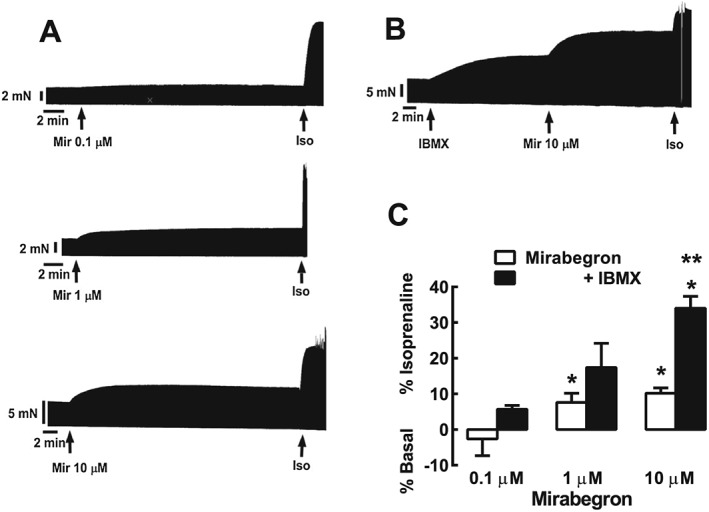Figure 2.

Cardiostimulant effects of mirabegron in human right atrium and potentiation by IBMX. (A) Representative recordings showing the effect of mirabegron (Mir) 0.1, 1 and 10 μM, followed by (−)‐isoprenaline (Iso) 200 μM in three separate male patients aged 65, 66 and 70 years respectively with coronary artery disease. Arrows indicate addition of mirabegron and (−)‐isoprenaline. (B) Representative recording of the effect of mirabegron 10 μM in the presence of the PDE inhibitor IBMX in a female patient aged 58 years with coronary artery disease. (C) Summary of data indicating that mirabegron (1 and 10 μM) significantly increased the contractile force (mirabegron 0.1 μM, 6/6; 1 μM, 7/6 and 10 μM, 22/22, as trabeculae/patients). Increases in contractile force are represented as a percentage of the response to 200 μM (−)‐isoprenaline (% Isoprenaline). Reductions in contractile force are represented as a percentage of basal force (% Basal). *P < 0.05. significant increase in force of contraction. The absolute mean values for contractile force (as mN) before and after mirabegron are given in Table 2. Responses to mirabegron in the presence of IBMX (0.1 μM, 6/5; 1 μM, 7/6; 10 μM, 15/13, as trabeculae/patients) showed that IBMX potentiated responses to mirabegron (10 μM). **P < 0.05, significant effect of IBMX.
